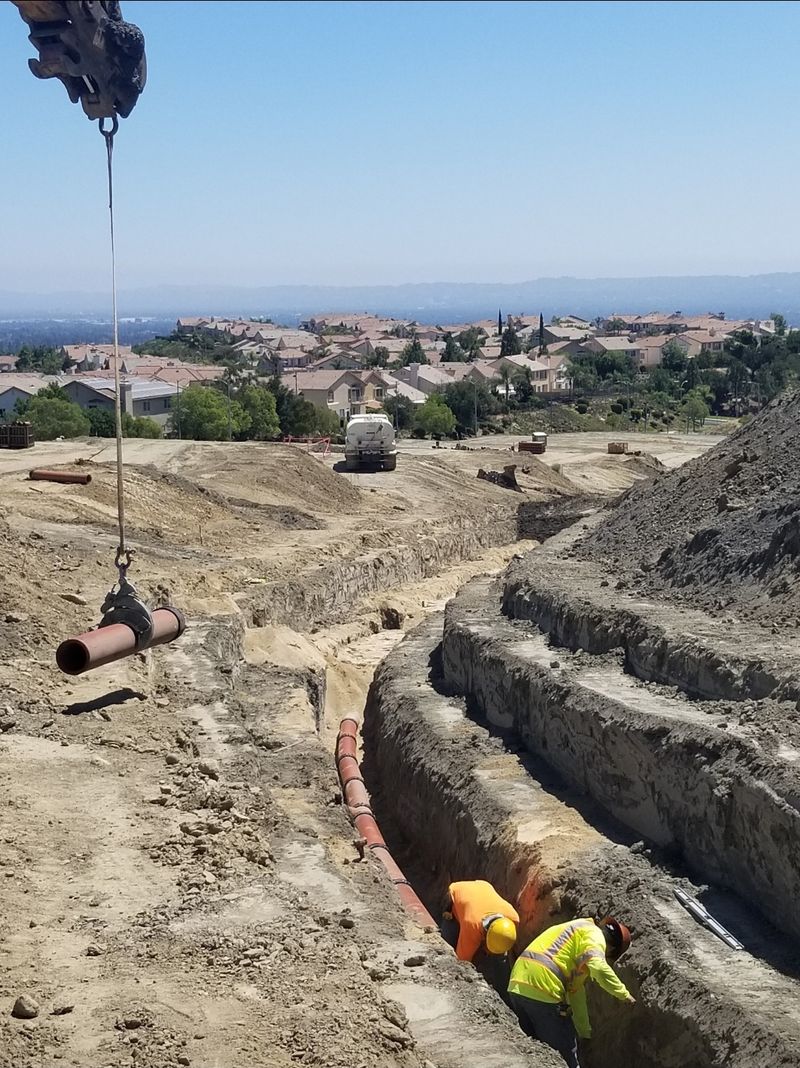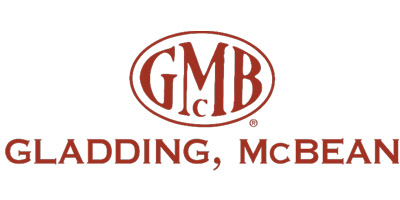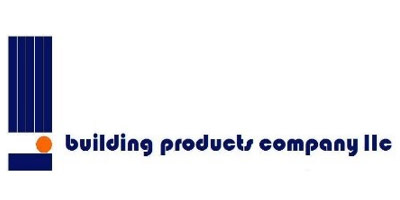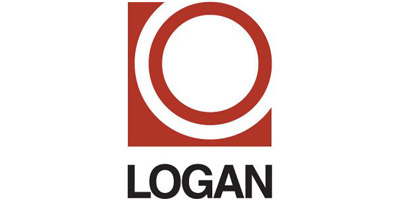What is the best way to get updated information on proper installation techniques and bedding classes?
NCPI’s Vitrified Clay Pipe Engineering Manual, ASTM C12, NCPI’s Installation and Inspection Handbook and NCPI’s CCTV Handbook are the best sources of current information on installation techniques and bedding classes. The NCPI publications are available online or through our member companies.
If this is your first time to install VCP or if it’s been a few years, we strongly recommend the Installation & Inspection workshop for your inspectors and contractor’s crew.
How do I get a printed version of the Engineering Manual?
Printed versions of NCPI’s Vitrified Clay Pipe Engineering Manual are available from our member companies. The most up-to-date version of the Manual can be downloaded from this web site.
What are the dimensions of VCP?
Clay Pipe is manufactured to a three-edge bearing strength specification, not overall dimensional criteria. ASTM C700 provides manufacturing dimensional tolerances as well as minimum three-edge bearing strengths. Wall thicknesses vary by pipe size and manufacturer. Please contact the pipe manufacturer to get specific information.
It is difficult to get dimensional information for older pipe. Over the 200+ years that clay pipe has been manufactured in the U.S., several different classes or strengths of pipe have been used, a number of manufacturers are no longer in business and it can be very difficult to identify which manufacturer made a given pipe.
What ASTM standards are used in the design, testing, installation & maintenance of VCP?
- ASTM C12 Standard Practice for Installing Vitrified Clay Pipe Lines
- ASTM C301 Standard Test Methods for Vitrified Clay Pipe
- ASTM C425 Standard Specification for Compression joints for Vitrified Clay Pipe and Fittings
- ASTM C700 Standard Specification for Vitrified Clay Pipe, Extra Strength, Standard Strength and Perforated
- ASTM C828 Standard Test Method for Low-Pressure Air Test of Vitrified Clay Pipe Lines
- ASTM C896 Standard Terminology Relating to Clay Products
- ASTM C923 Standard Specification for Resilient Connectors Between Reinforced Concrete Manhole Structures, Pipes, and Laterals
- ASTM C1091 Standard Test Method for Hydrostatic Infiltration Testing of Vitrified Clay Pipe Lines
- ASTM C1208 Standard Specification for Vitrified Clay Pipe and Joints for Use in Microtunneling, Sliplining, Pipe Bursting and Tunnels
- ASTM C1920 Standard Practice for Cleaning of Vitrified Clay Sanitary Sewer Pipelines
Can VCP be used in deeper cover depths? -- Deeper than plastic pipes?
VCP lines at depths over 70 feet are not uncommon. Clay pipe is a rigid conduit that brings its own structure to the trench, whereas PVC is a flexible conduit relying on bedding and sidefill support for structural integrity.
Can VCP be utilized in pressure applications?
No. VCP is used for gravity flow non-pressure sewer applications.
Can Vitrified Clay pipe be used in shallow coverings? Are there any special design considerations when installing VCP in a shallow placement under a roadway?
Yes, it can. Live load computations should be part of the design considerations for bedding and trench backfill at cover depths of 8 ft. or less. For more information about the safety factors associated with a live load and specific bedding classes required to meet those safety requirements, use the Trench Load calculator found in the NCPI Toolbox
Cover depths of less than 2 ft may require a steel casing for an adequate safety factor using an HS-25 live load scenario. When in doubt, please contact NCPI for a discussion of your specific challenge.
How do you calculate the Factor of Safety (FOS)?
FOS = (Pipe Strength) x (Bedding Factor) / Anticipated Trench Load. See chapters 4 and 6 of the NCPI Engineering Manual.
Pipe strength can be defined as the minimum three-edge bearing strength per ASTM C700, Greenbook Extra Strength or Greenbook High Strength. Use the Trench Load calculator in NCPI’s Toolbox to enter the pipe size, soil type, planned trench width and depth of cover for a project. Toolbox will do calculations to return safety factors for various pipe standards and bedding classes. The Trench Load calculator can also include considerations for live loads where needed.
How do you compute the field supporting strength (FSS) of clay pipe?
The field supporting strength (FSS) equals the minimum three-edge bearing strength of the pipe multiplied by the bedding factor)
How does VCP perform in seismic events?
VCP holds up very well in seismic zones. The short lengths (as compared with other materials) and flexible compression joints can take both angular deflection and shear forces to endure the lateral waves. VCP sections do not deflect or deform with loading changes. The clay pipe manufacturers have been industry leaders in the development of seismic cushions within the joints. Even before the introduction of the seismic cushion, in the few zones that have been studied following an earthquake, VCP lines were statistically the most likely to have survived a 7.1 quake.
The factory-applied flexible joint can take angular deflection and a tremendous amount of shear loading which are key elements in pipeline seismic resiliency.
In what cases do you recommend completely encasing a VCP line in concrete or CLSM?
One of the cementitious bedding classes with load factors greater than 2.8 should be used for achieving the appropriate Factor of Safety for the trench design due to the anticipated trench load on the pipe. These bedding classes are also commonly used to protect the installed pipe from future adjacent utility work or construction even though it is not needed for the trench design.
In fine-grained soils with fluctuating water tables, one of the cementitious bedding classes is an alternative to Geotextile fabric wrapped granular bedding.
Is impact load included in Factor of Safety? How about live load?
Impact factor is a variable in the equation to compute live loading and multiplied directly to the live load considered. To calculate the anticipated live load and Factor of Safety for a given project, visit the Trench Load program in the NCPI Toolbox.
Is there a way to predict the effect of additional soil loading on an existing system?
The effect of adding surcharge loading or live loading can be computed but the age as well as detailed knowledge of the original construction is very important to accurately estimate the effect of the additional load. NCPI has put together a set of guidelines for evaluation of surcharge conditions. We can also help with predictive calculations.
Optimal Mix for CLSM?
NCPI conducted extensive research into the optimal mix design for CLSM. The research prioritized quick setting for same day backfill while maintaining the desired strength. See the complete research paper, including the optimal mix here.
Soil above the pipe settles less than the outside prism soil. Could it be because of improper compaction?
The adjacent (outside) soil prisms will always settle more than the center prism directly above the pipe when a granular material or soil is used in the side fills. If it is necessary to avoid this settlement, use CLSM or concrete bedding in the side fills of the installed pipe.
Can I use slurry (CLSM) to backfill the trench?
Slurry (CLSM) backfill should never be used unless the pipe is bedded with the same material. Any pipe material bedded with a granular product would see, and have to support, the entire trench load of the slurry (CLSM) backfill.
What do I need to know when designing a pipeline under a Railway?
Cooper E80 Rail dead and live loads need to be computed and will be dependent upon distance from the bottom of the rail structure to the top of pipe.
What does ESVCP stand for and where is it used?
Extra-Strength Vitrified Clay Pipe (ESVCP). This is made and supplied for all gravity sewer installations. All pipe made today is ESVCP; years ago, a thinner walled pipe was manufactured and termed Standard Strength Vitrified Clay Pipe (SSVCP).
What is the maximum allowable offset measurement?
Joint offsets (joint steps) could range from 1/8-inch to as much as ½-inch. This variable depends on the pipe diameter. The larger the pipe the greater the possible joint offset (step at the invert between pipe sections) due to dimensional tolerances for diameter and roundness. Modern VCP joints have been tested and continue to be leak-free well-beyond these ranges.
What is the price difference between Pilot Tube (trenchless) Method & open cut installations?
This would depend on soil type, water table, cover depth, other utilities above the bore, and surface restoration needs. Trenchless methods are sometimes the LESS costly installation method depending on these factors.
Why use trenchless installation with VCP?
The reasons for selecting a trenchless installation method vary greatly by project, but a few of the most common reasons include: cost of surface restoration, water tables and depth of installation. When a project calls for a trenchless installation method, the Pilot Tube Method is frequently preferred because of the reliably rifle barrel straight line and grade.
Why is a narrower trench more desirable for VCP installations?
VCP is a rigid conduit, providing structure within the trench. The load on rigid pipe increases as trench width increases. Bedding and backfill contribute to the final field supporting strength of an installation, but the narrower trench limits the amount of load applied to the pipe by the soil prisms above it. Commonly, a minimum of 12-inches is needed on both sides of the pipe for placement and haunching of a granular bedding material.
What number would constitute a failure for the Factor of Safety (FOS)? If a Safety Factor under 1 is unacceptable, what is the maximum level acceptability?
Anything below 1.0 for a Factor of Safety indicates a risk of failure.
During trench design for VCP, an FOS between 1.0 and 1.5 is the norm, however an engineer may opt to specify an even greater safety factor based on a risk / reward calculation for a specific project or location.
What load factors are used in designing a trench?
Load factors depend on which bedding class is selected for the trench design. See Chapter 6 of the Vitrified Clay Pipe Engineering Manual, ASTM C12 or our Bedding Classes page for more information, including load factors.
What is transition width?
Transition width is the point in the trench where the trench load is equal to the embankment load. Simply put, the load on rigid pipe increases as trench width increases. The transition width is the point beyond which increasing the trench width will no longer add any additional load to the pipe. At transition, the pipe load is at its maximum value. Trench width for any rigid conduit is measured at the top of the pipe barrel.
Trench Width is explained in NCPI’s Vitrified Clay Pipe Engineering Manual and may be calculated using the NCPI Toolbox program. To find out more and to use Toolbox, click here. For assistance using the program or with any special concerns, please contact the NCPI office at 262-742-2904 or contact a member company for local representation.
Does the load calculation coefficient (Cd) vary with Breadth of Ditch (Bd) and the Height from the top of conduit to the upper surface (H) for a particular bedding material?
The Cd coefficient is dependent on the type of backfill material above the pipe (soil prism vertical frictional planes), the trench width (Bd), and the depth of cover (H) but NOT the pipe bedding.

For information about purchasing pipe, please contact one of our member companies.
For complete technical information, download our Manual or one of our Handbooks.
*Qualifies for PDH Credits








